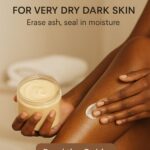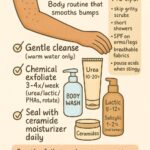
Set the room, and your skin will follow.
If your face is tight every morning no matter how much cream you use, or weirdly shiny yet still flaky, your bedroom air might be the real culprit. Skin loses water overnight, and the rate it escapes depends a lot on humidity. Aim for a steady 40 to 60 percent relative humidity while you sleep. That window keeps your barrier flexible, reduces transepidermal water loss, and helps actives perform the way they should. Here is how to set it, measure it, and adjust your routine so your skin wakes up calm instead of cranky.
Why 40 to 60 percent is the sweet spot
Your skin barrier is a brick-and-mortar wall. The “bricks” are skin cells and the “mortar” is a mix of lipids that keep water in. When room air is too dry, water moves out of skin faster, fine lines look sharper, and active ingredients feel spicier than they should. When air is too humid, sweat and oil sit on the surface, pores look puffier, and congestion is more likely. The 40 to 60 percent range balances both pressures. It is high enough to slow water loss without feeling swampy, and low enough to avoid the sticky conditions that make makeup slide and pores complain. Keep your environment in that lane and you need fewer emergency products, fewer harsh exfoliants, and less guesswork overall.
How to measure and control your bedroom humidity
You do not need fancy gear. A basic digital hygrometer is enough. Put it where you actually sleep, not on a sunny windowsill or right by a vent. Check readings right before bed and right after you wake up for a week. Those two numbers tell most of the story.
If readings fall below 40, add moisture the simple way first. Close doors and windows at night. Run a bowl of water near a heat source only if it is safe. Better yet, use a cool mist or evaporative humidifier with a built-in humidistat. Set it to 45 to 50 percent and let it cycle on and off. Rinse the tank daily and deep clean weekly, so you are not misting minerals or buildup into the air.
If readings sit above 60, move air and pull humidity down. Run a quiet dehumidifier or keep the HVAC fan on low to circulate. Keep plants away from the nightstand for a while. If you dry laundry indoors, move it to another room. High humidity at night makes skin feel sticky, and that encourages more touching and wiping, which just irritates things further.
Your goal is consistency. Wild swings cause more trouble than a steady number that is slightly off. A smooth 45 to 55 percent all week will beat a yo-yo between 30 and 70 every time.
What changes on your face when the room is in range
When humidity is steady, your moisturizer does not have to work so hard to trap water. You will notice less tightness on the cheeks, fewer micro-flakes around the nostrils, and a smoother look under the eyes. Makeup sets quicker and stays flexible. If you are oily, you will still make oil, but you will be less “greasy yet thirsty,” which is the classic oily-dehydrated feel. Retinoids and low-pH actives behave more predictably because the barrier is not as stressed. That means fewer surprise sting days and a more reliable timeline for results. You will also find you can use a little less product and still feel comfortable by morning.
Night routine adjustments by season and humidity reading
Build your PM routine around the hygrometer. Keep the steps simple and scale textures up or down.
When bedroom humidity is under 40
- Cleanse gently and keep water lukewarm.
- Add a humectant layer with glycerin or panthenol.
- Follow with a mid-weight ceramide moisturizer.
- Dot a thin occlusive pass on trouble zones, like a pea of petrolatum along the sides of the nose and the corners of the mouth.
- Keep acids to once weekly and buffer your retinoid with moisturizer first.
- Run a cool mist humidifier to 45 to 50 percent.
When bedroom humidity is 40 to 60
- Cleanse, then a humectant serum if you like layers.
- Use a moisturizer that matches your skin type.
- Keep your normal actives cadence.
- Skip the heavy occlusive unless you are extra dry or using a strong retinoid.
When bedroom humidity is over 60
- Cleanse and pat dry fully.
- Use a lighter gel-cream moisturizer so skin can breathe.
- Favor non-comedogenic formulas and keep occlusives off the T-zone.
- Keep actives on their own nights to reduce chance of prickly skin.
- Add air movement and consider a dehumidifier until you are back under 60.
The routine stays short all year. You are changing textures and cadence, not adding six new steps.
Quick fixes vs long-term habits
Quick fixes that help tonight
- Move the humidifier closer to your side of the bed, not across the room.
- Slip a glass of water and a lip balm on the nightstand so you stop licking lips.
- Use a soft, clean pillowcase and rotate it midweek.
Long-term habits that keep skin steady
- Clean humidifier tanks on schedule so the mist stays clean.
- Seal windows and check for drafts that crash your reading overnight.
- Keep strong actives to one step per night so the barrier is not juggling moisture swings and ingredient stress at the same time.
- Set a target, then stop tinkering. Consistency beats perfection.
Troubleshooting common bedroom humidity problems
You wake with flakes even at 45 percent.
Bump your moisturizer up one notch and add a tiny occlusive pass on the driest spots. Keep your cleanser short and gentle. If you are stacking actives, separate them across the week.
You feel slick by 3 a.m. and break out.
Drop to a lighter moisturizer, keep the humidifier at 45, and add gentle airflow. Consider a BHA on one night per week only, not a daily habit.
Your eyes burn in the morning.
Pull the humidifier back from your face a little and keep eye-safe sunscreen during the day. If your room is very dry, tears evaporate faster and that can feel sharp, so get back above 40.
You see static hair every morning.
That is a low-humidity tell. Bring the room to mid-40s and add a small hydration layer under your nighttime moisturizer.
Sleep, skin, and why this works
Most barrier repair happens while you sleep. If the air is too dry, skin spends the night losing water and you wake up chasing moisture with heavy creams that still do not stick. If the air is too humid, you sweat lightly, wipe your face, and end up with micro-irritation. The right range reduces both extremes. It is not a cure for every skin concern, but it makes all your other choices work closer to how they were designed. That means fewer product changes, steadier progress, and calmer mornings.
Final Thoughts
Set the room, then set your routine. Get a small hygrometer, run a humidifier or dehumidifier as needed, and aim for a steady 40 to 60 percent in the bedroom. Keep your evening steps short and match textures to the reading. Give it two to three weeks. Most people notice less tightness, smoother makeup, and fewer “why is this stinging” moments once the air stops yo-yoing. Calm air makes for calm skin.
See also
Dialing in humidity cuts down on barrier stress, but product pairings still matter. If you are layering strong steps, Ingredient Clash List to Avoid shows which combos to separate so your skin stays comfortable while your environment does its job. If you are prone to clogged pores when rooms get muggy, Pore Care Without Wrecking Barrier lays out a gentle plan that keeps clarity without stripping when the dehumidifier has to work harder.
If dryness is still your biggest headache at ideal humidity, build a simple base with Ceramide Moisturizers for Damaged Skin Barrier and add a water-binding step from Best Hydrating Toners for Dry Skin. And if pollen season is adding redness on top of dryness, Allergy Season Skin Plan: Redness and Dryness gives a short, calm routine that pairs well with your bedroom changes.
FAQs
1) Is 40 to 60 percent safe for walls and furniture
Yes for most homes. If you see condensation on windows at 50, reduce to the low-40s and increase airflow. Consistency is more important than chasing the highest number.
2) Do I need a fancy humidifier
No. Any model with a humidistat works. Clean it often, use the lowest setting that holds 45 to 50, and place it a few feet from your head so the mist disperses.
3) Will humidity fix oily-dehydrated skin
It helps. Keeping the room in range reduces the “greasy but thirsty” feel, then a light humectant plus gel-cream at night usually finishes the job.
4) My partner runs hot and hates humid air. Now what
Set the target to 45 to 50 and add gentle airflow. Use a lighter moisturizer for yourself on nights you run warmer so comfort stays high for both of you.
5) How long until I notice a difference
Some people feel less tightness in three to five nights. Texture and morning makeup wear often improve within two to three weeks of steady humidity.
Affiliate Disclosure
If you purchase through links on our site, we may earn a small commission at no extra cost to you.




